Review by Pete Vack
Photos from the book with permissions, and by Jonathan Sharp
Ballot: A Review, a Discussion, an Enigma
With the publication of Ballot by Daniel Cabart and Gautam Sen, this obscure French marque is now honored with a classic, beautifully luxurious, extraordinarily illustrated, well-documented two-volume set that casts a great deal of light on Ernest Ballot, his company, and his cars.
Ballot’s company, once well-known and respected only for its industrial engines, briefly forayed into motor racing at its highest level and changed the course of automotive engine design. During the 1920s Ballot produced a series of advanced high-performance DOHC and SOHC two-liter cars. Ballot, the book, is an important work, and despite the cost, is a worthy, almost necessary addition to any serious motoring enthusiast, historian, or author.
Between the covers
The two volumes of 919 pages are not exactly in chronological order; Volume 1 consists of a brief history of Ernest Ballot and his company researched by Cabart; a chapter on Ernest Henry by his grandson Rudy; the technology of the Ballot Grand Prix engines by Karl Ludvigsen, which includes a study on the straight eight racing engine; Gautam Sen does a chapter on every race in which Ballots participated, and another on the history of each model of Ballot racing cars, the 5/8LC, (5 liters, 8 cylinders) the 3/8LC, (3 liters) and the 2 LS (2 liters, Sport). Volume 2 packs in The Road Cars, Ballot Engines, the Ballot Legacy by Ludvigsen, Appendixes, Bibliography and Index. David Burgess-Wise, Doug Blain and others also contributed to the book.
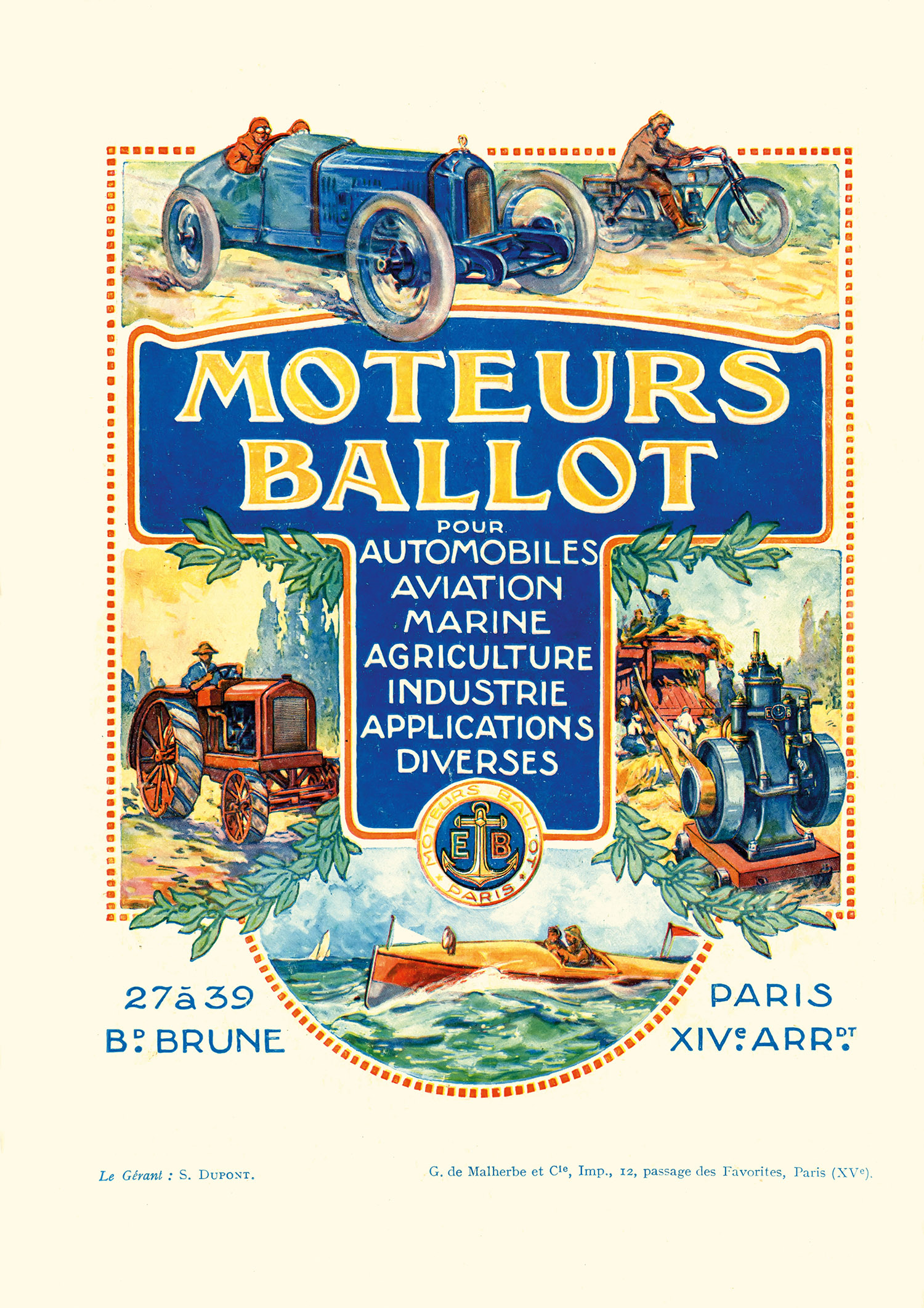
Ballot was obscure because they were primarily about engines—engines for cars, boats, planes, and electricity from 1904 to 1932. During the 1920s, automobiles and racing were sidelines, although for several years Delages were powered by Ballot engines.
Ernest Ballot and company
Google him; you will not find much. Most certainly, Daniel Cabart has found a lot of new information, but still could only fill about six pages about the founder and lead administrator of Ballot (which was a highly successful Parisian industrial company), based on newspapers, official records, magazine articles, and legal documents. Born in 1870 in Angouléme France, Gabriel Ernest Maurice Ballot spent seven years in the French Navy and became a petty officer mechanic. He worked for a number of firms after his stint in the service and in 1904, with a Julien Faivre, founded E. Ballot et Cie, which was reconstituted financially several times before becoming part of Hispano Suiza.
His brother Albert was a part of the firm and was ousted from the company along with Ernest in 1928. He apparently lived alone until 1937 when he died at the age of 67. He always kept to himself, was a very private person who never married, and left his fortune to his brother and sister. For someone who was so successful founding and administering a leading-edge French company in Paris, the notable lack of information about him is indeed puzzling.
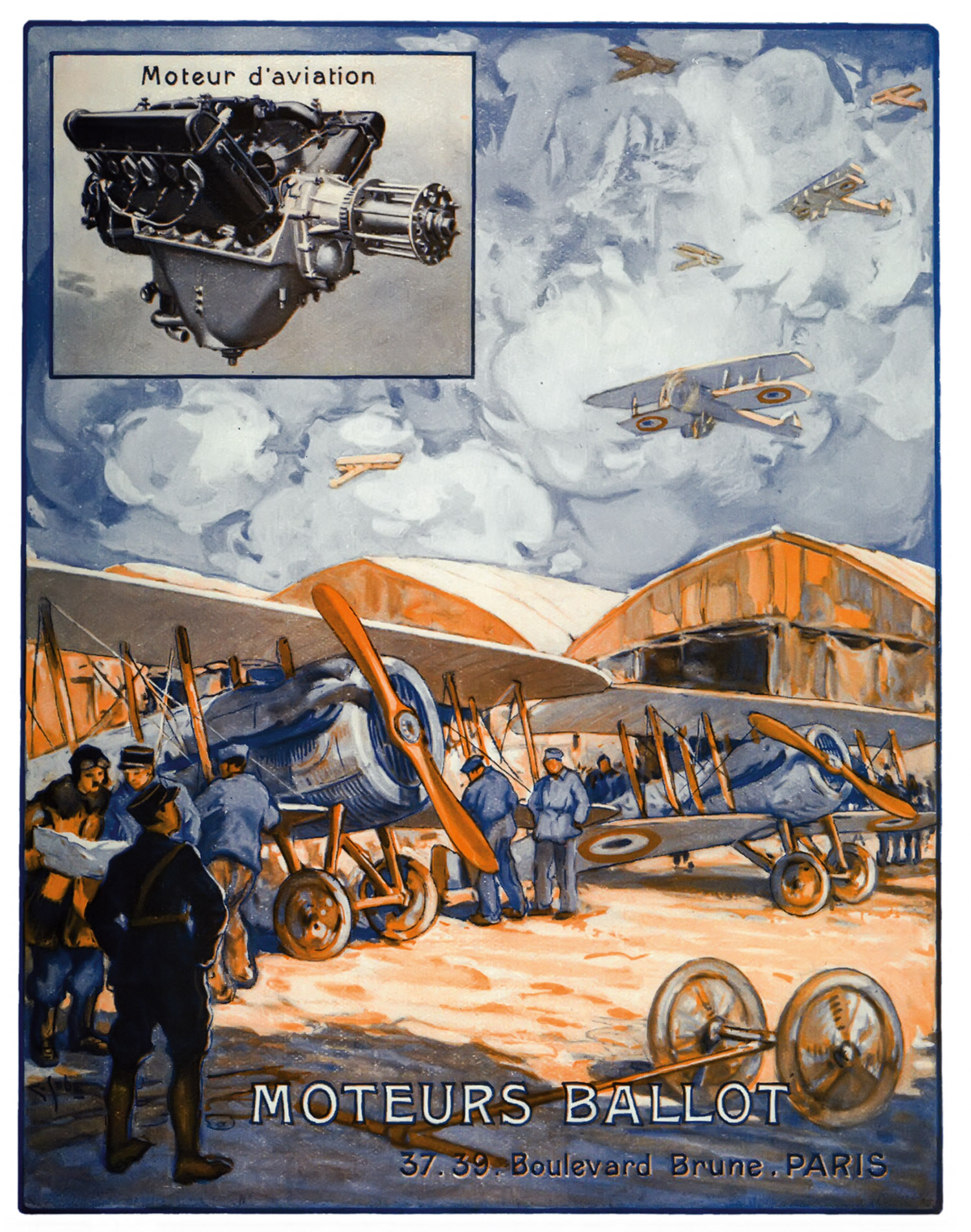
During WWI the Paris-based firm made the famous Hispano Suiza V8 aircraft engines, and in the end, when the ravages of the world-wide Depression could no longer be avoided, ironically Ballot was incorporated into Hispano Suiza.
Ballot, the enigma
Was there a reason for this secrecy? Some historians surmise that the petty officer mechanic was a ‘front man’ for a group of investors who wanted to buy a business to augment their concerns. Having founded Ballot e Cie with 60,000 francs, in 1911 a new company, ‘Etablissements Ballot’ was created with a capital of 1,800.000 francs. Most of the shares were owned by a still-mysterious company called Omnium Automobile. Reportedly, one of those investors was Hispano Suiza. Very few shares were accorded to Ernest Ballot.
The front man story was first mentioned by Griff Borgeseon in his 1977 article in “A New Look at a Defaced Monument” in Automobile Quarterly V15 No 2. Author Daniel Cabart went in search of new evidence. Says Cabart in an email to VeloceToday , “I realized that I could not rely on the several writings about Ballot. I trusted Griffith Borgeson, but we could not have access to his archives, as to see where his sources came from. The other writer from whom I obtained information (his widow entrusted me with his files) is Marc Douezy d’Olendon, who made a real job of investigating, with access to very rare and confidential files (banks, ministry of finance, Legion d’Honneur archives, etc.). The strange thing is that I could not find in this data most of the things evoked (and repeated without checking…) about Ballot, i.e., the front man financed by Omnium Automobile.”
If it was true that Ernest Ballot was a front man, he clearly ran the firm, even if directed by the board. Yet his decisions were largely his alone. “One thing is sure: Ernest Ballot sometimes took “crazy ” decisions, very quickly, and it’s difficult to imagine that a board of wise “financers” was behind him to take these decisions,” says Cabart.
While there is much new information about Ballot and the company that bears his name, Cabart only published what is correct and can be verified. There were many dead ends and many questions left unanswered. “I preferred to leave some questions open rather than stating things on which I would have risked being contradicted sooner or later.”
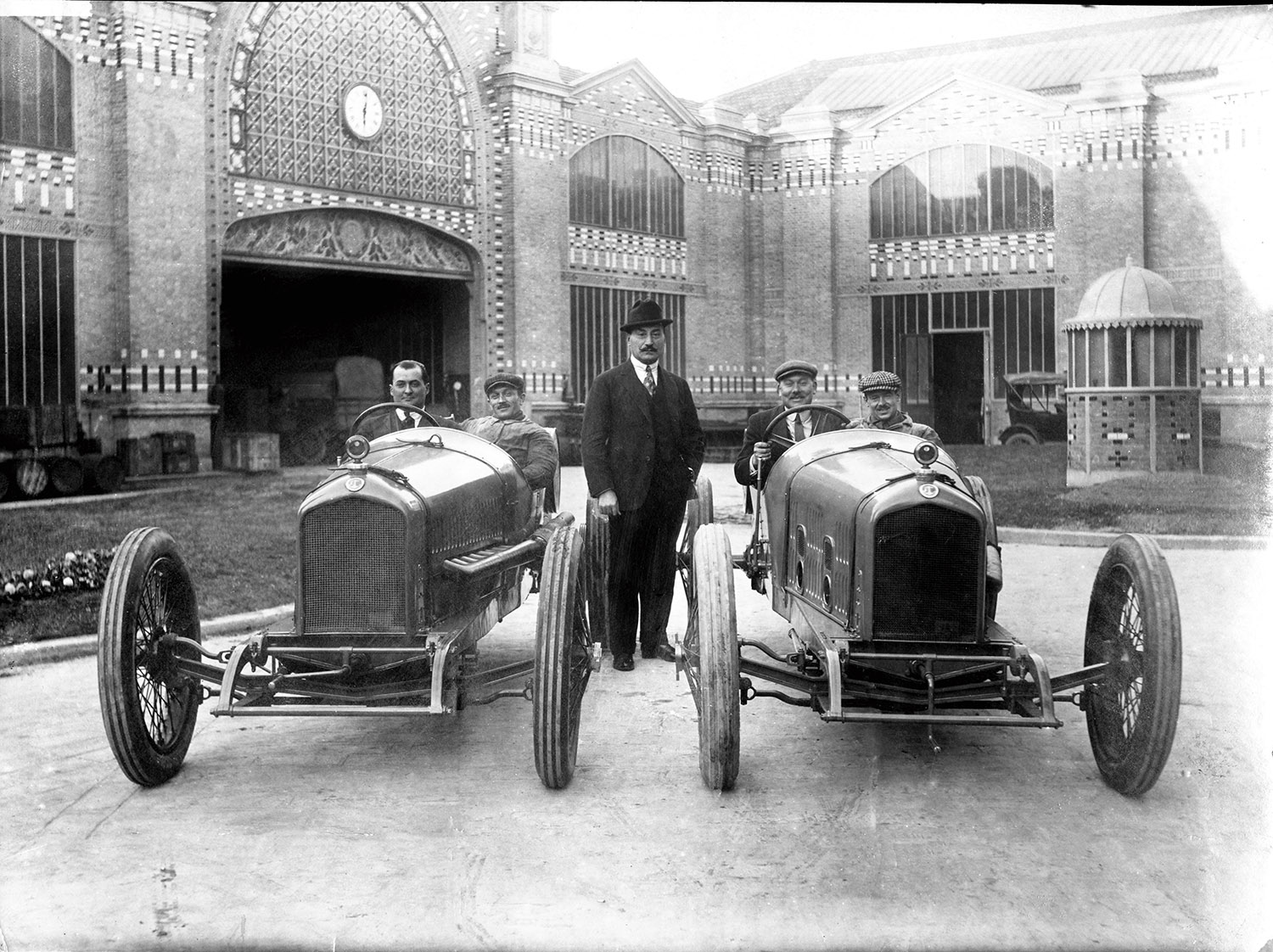
Going to America: 1919, ready for Indy. Ballot reportedly made the decision to build four race cars and enter them in the 1919 Indianapolis 500 on his own. It was a very expensive gamble. Ernest Ballot at the center, Albert Guyot at left and Rene Thomas on the right. The art-deco styled factory is in the background.
Ballot, the instigator
Whatever formal role was held by Ernest Ballot, he was the instigator of the Ballot DOHC four-and eight-cylinder race cars and the advanced DOHC two-liter touring cars. His decision to build four highy-advanced race cars to compete at Indianapolis in 1919 was done quickly and in great secrecy but not without some precedence; Cabart shows that Ernest Ballot was involved in racing a Ballot-engined Pierron as early as 1908. Ballot met race driver and Indy winner René Thomas before WWI and it was Thomas who suggested that Ernest Ballot hire ex-Peugeot engineer Ernest Henry in 1918.
Ernest Henry, the genius
Had it not been for that quiet, introverted engineer from Geneva, there would be no lavish two-volume work on Ballot automobiles.
From 1918 to 1922, Ernest Henry, already famous for his design of the four-cylinder, four-valve DOHC Peugeot Grand Prix car, was given the money, the freedom and the staff to create an eight-cylinder masterpiece along the lines of his successful four-cylinder DOHC pre-war Peugeot Grand Prix car.
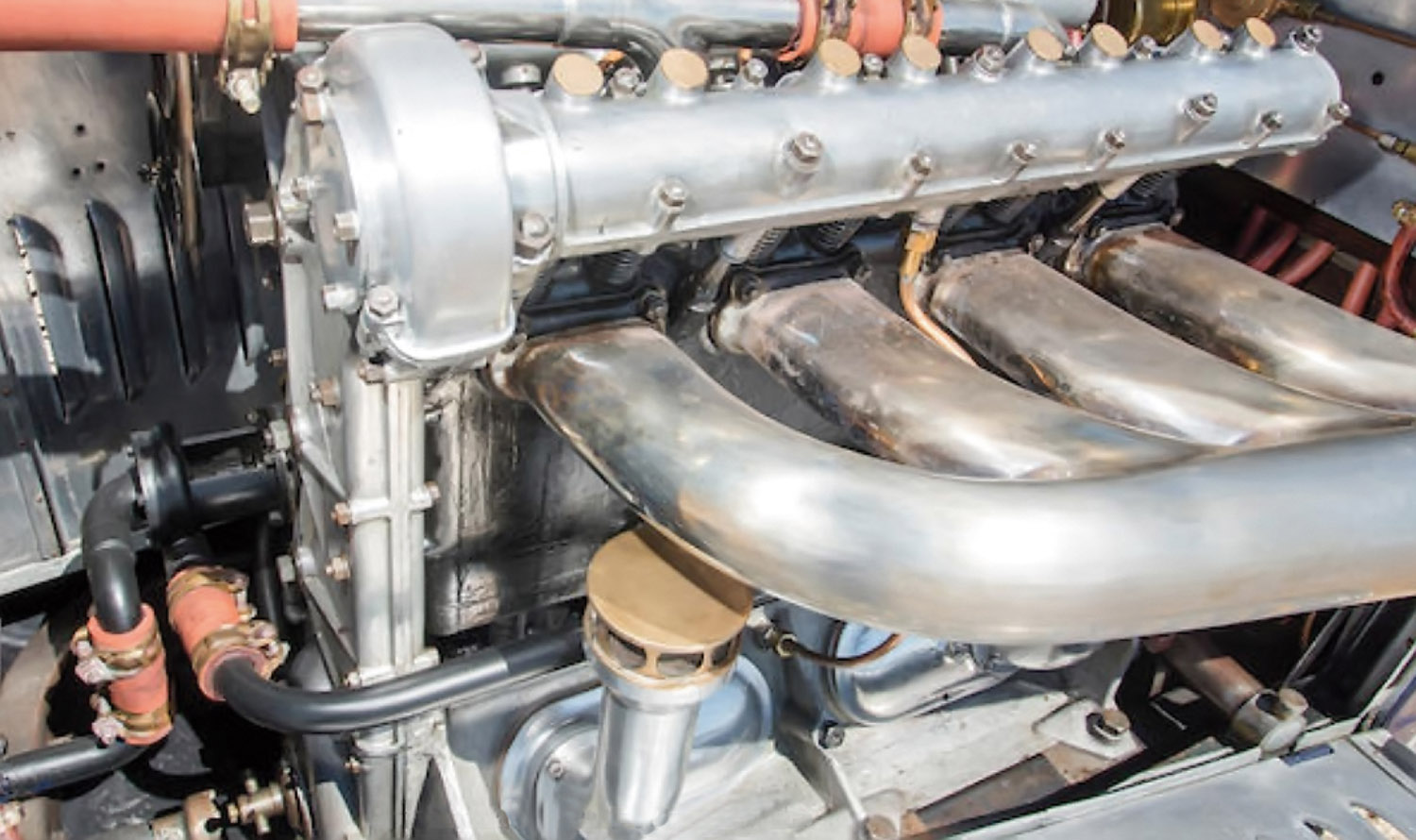
Henry’s Peugeot engine. The 1912 Peugeots “…were the first cars of any kind to combine a vee-inclined valve cylinder head with twin overhead camshafts.” (Ludvigsen) For Ballot, Henry would repeat the design but multiply by two.
These eight-cylinder Ballots combined the DOHC technology with a straight eight. The combination created the world’s fastest race cars, and influenced race car design well into the 1950s. In fact, DOHC engines in both four and eight-cylinder forms would dominate Grand Prix racing and Indianapolis cars for decades. The significance of the Henry engines cannot be overstated.
Out of the shadows
Although wildly famous on both sides of the Atlantic in the early 1920s, the Ballot automobiles, both racing and street cars, seemed to suddenly disappear and became a footnote to history, at least until Griff Borgeson arrived on the scene in the 1960s, looking for answers about the origins of the Offy-Drake engine. Borgeson spent years tracking down the designers and drivers who might know something about the development of the Grand Prix Peugeots. Most of his findings were published in his book, The Classic Twin Cam Engine, published by Dalton Watson in 1979 (before the publishing company was sold to the current owners Glyn and Jean Morris). Borgeson also published in-depth articles, including “A New Look at a Defaced Monument” in Automobile Quarterly V15 No 2, and “Ballot’s Production Car Era,” Automobile Quarterly V21 No 2, (1983) but Ballot remained relatively unknown.
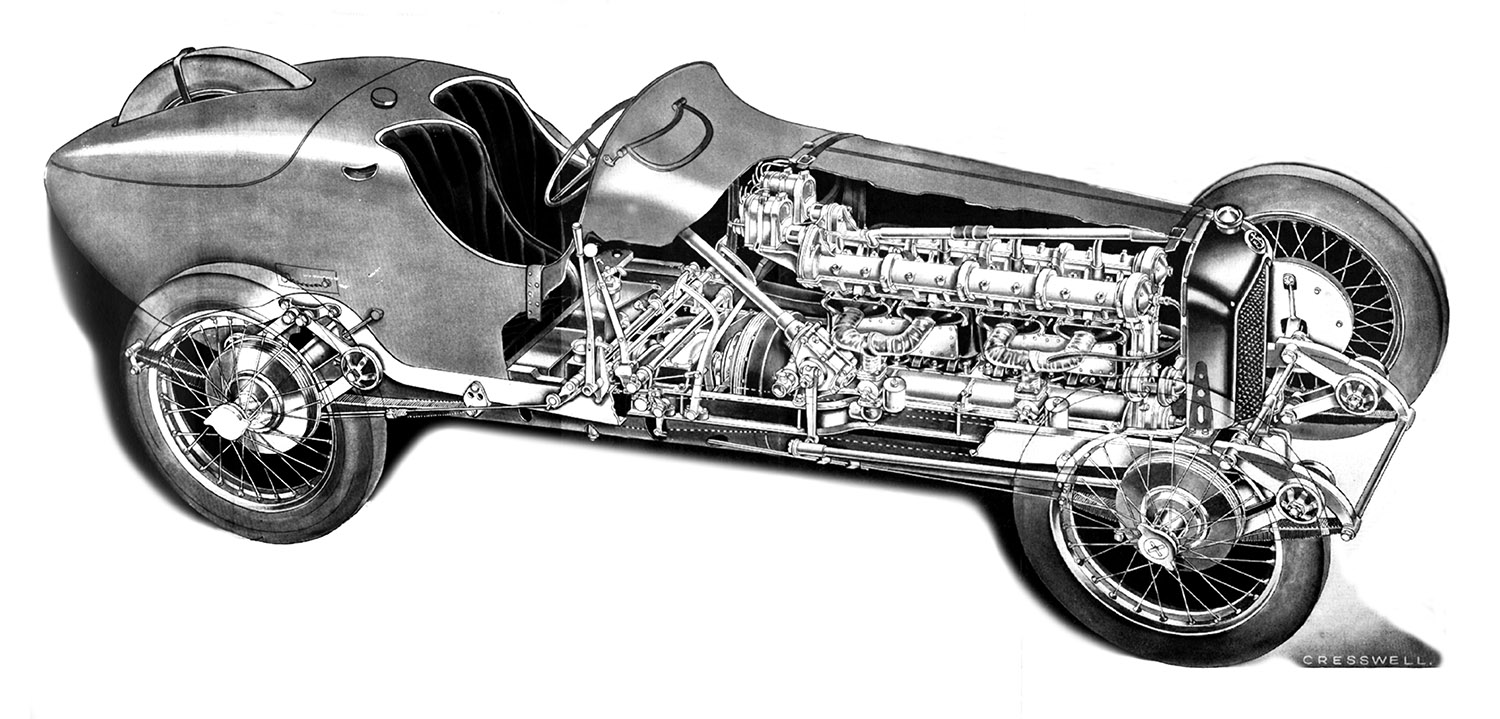
Like Ferrari, the Ballot chassis (seen here the 3/8LC) was conservative and the magic was found in the engine. In three-liter form, the engine developed 108 bhp at 3800 rpm. The revs race had begun.
We were most interested to see if the book set forth more information about Ernest Henry than Borgeson discovered long ago. While Grandson Rudy (who never knew his grandfather) finds as much information as possible, including a book of trigonometry tables left behind by Ernest, it seems that there is nothing much left to discover; no unpublished memoirs, letters, articles, relatively few factory documents pertaining to Henry. Yet it is a warmer, more heartfelt version of what we already know about Ernest Henry, and the family wanted to ensure that historians know that Ernest Henry did not die in “…misery, ignored by all,” as reported by the French magazine L’Automobile in July, 1957.
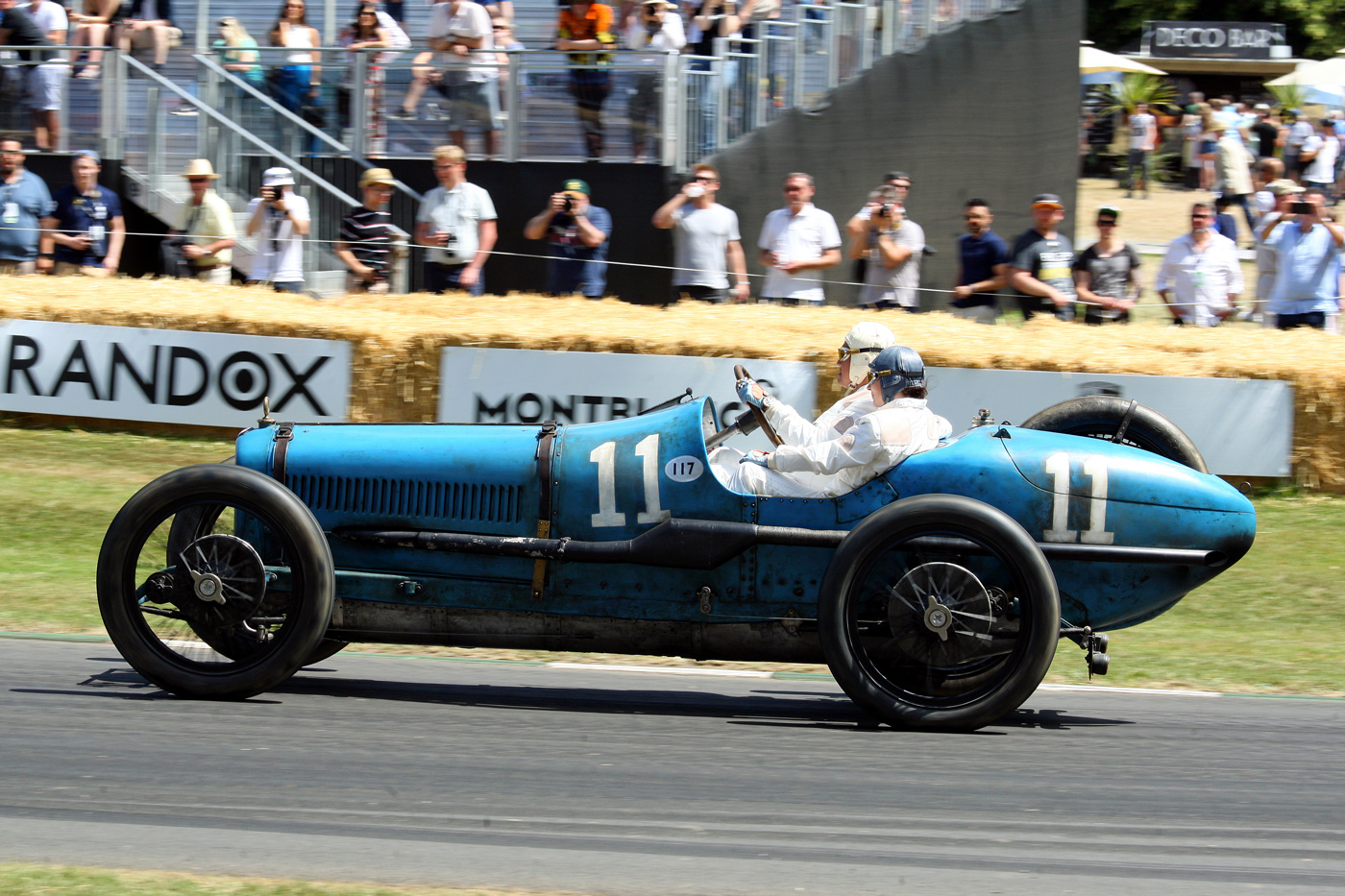
This Ballot 3/8 LC, chassis 1006, finished seventh at Indy in 1920 with Chassagne driving. Then it raced the 1921 ACF Grand Prix at Le Mans. Jules Goux later won the Italian Grand Prix with it. Photo by Jonathan Sharp
Ballot at the races
Gautam Sen gives Volume 1 additional depth and insight by chronicling every known race in which Ballot cars participated. Primary among these are accounts of the 1919 and 1920 Indianapolis 500s and the 1921 French and Italian Grand Prix.
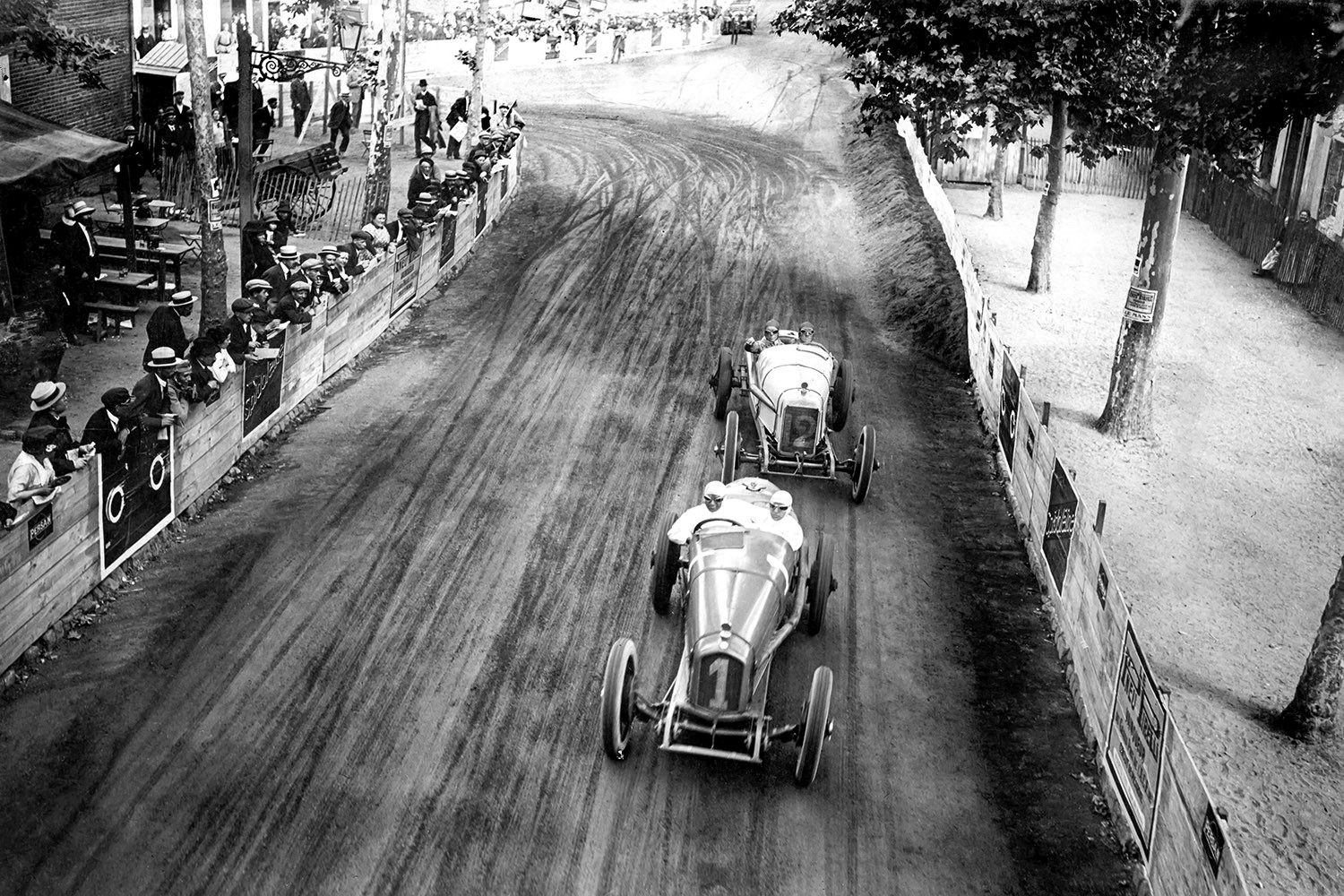
Ralph De Palma in the Ballot (chassis 1008) leads Jimmy Murphy in a Duesenberg at the 1921 French Grand Prix held at the Le Mans circuit. Fuel problems caused De Palma to slow, but Murphy went on to a well-earned victory. This is one of dozens of superb photos that document each one of the races in which a Ballot entered.
Sen puts together accounts from a variety of sources to explain the success—and the failures of the Ballot team, from the absurd lack of remembering to throw in some different rear end ratios for the four Indy cars in 1919, to the dramatic loss of the French Grand Prix, a race that put Duesenberg and Jimmy Murphy in the hall of fame. The Ballot finished second, but then finally achieved a victory at the Italian Grand Prix. The photos and research are all above average and helps explain why Ballot did so well and yet faired so badly.
Next week: The technology and legacy of the Ballot engines
Authors: Daniel Cabart and Gautam Sen, with David Burgess-Wise and Karl Ludvigsen
ISBN: 979-109026-303-9
Publication Date: Dalton Watson Fine Books, February 2019
Page Size: 219mm by 304mm 2 volumes, portrait
Hard, cover, with dust jackets and slipcase
Illustrations: 1650
Price: US$350
Call Dalton Watson: 1-847-945-0568 email info@daltonwatson.com
Click here to order your copy now!
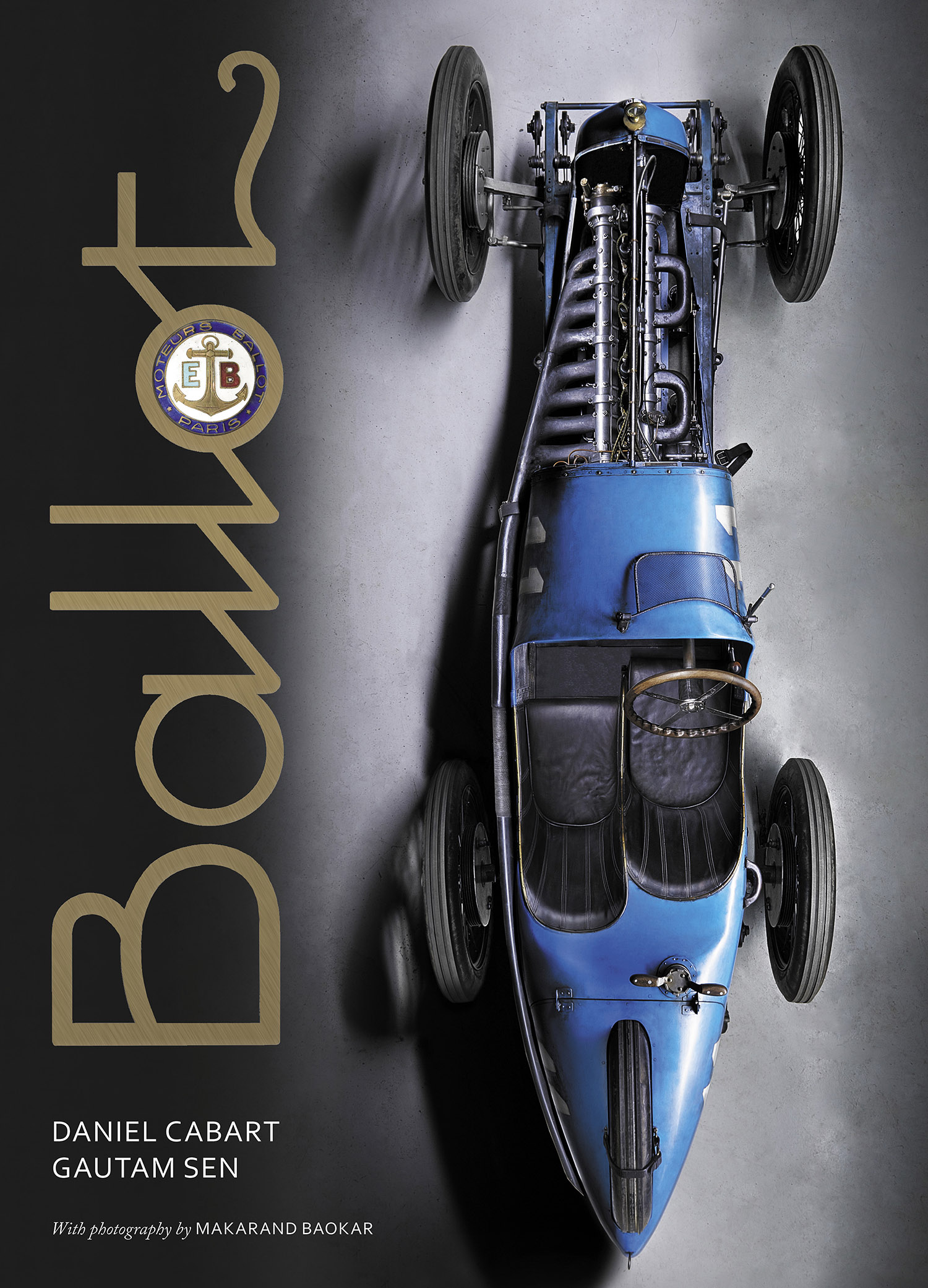
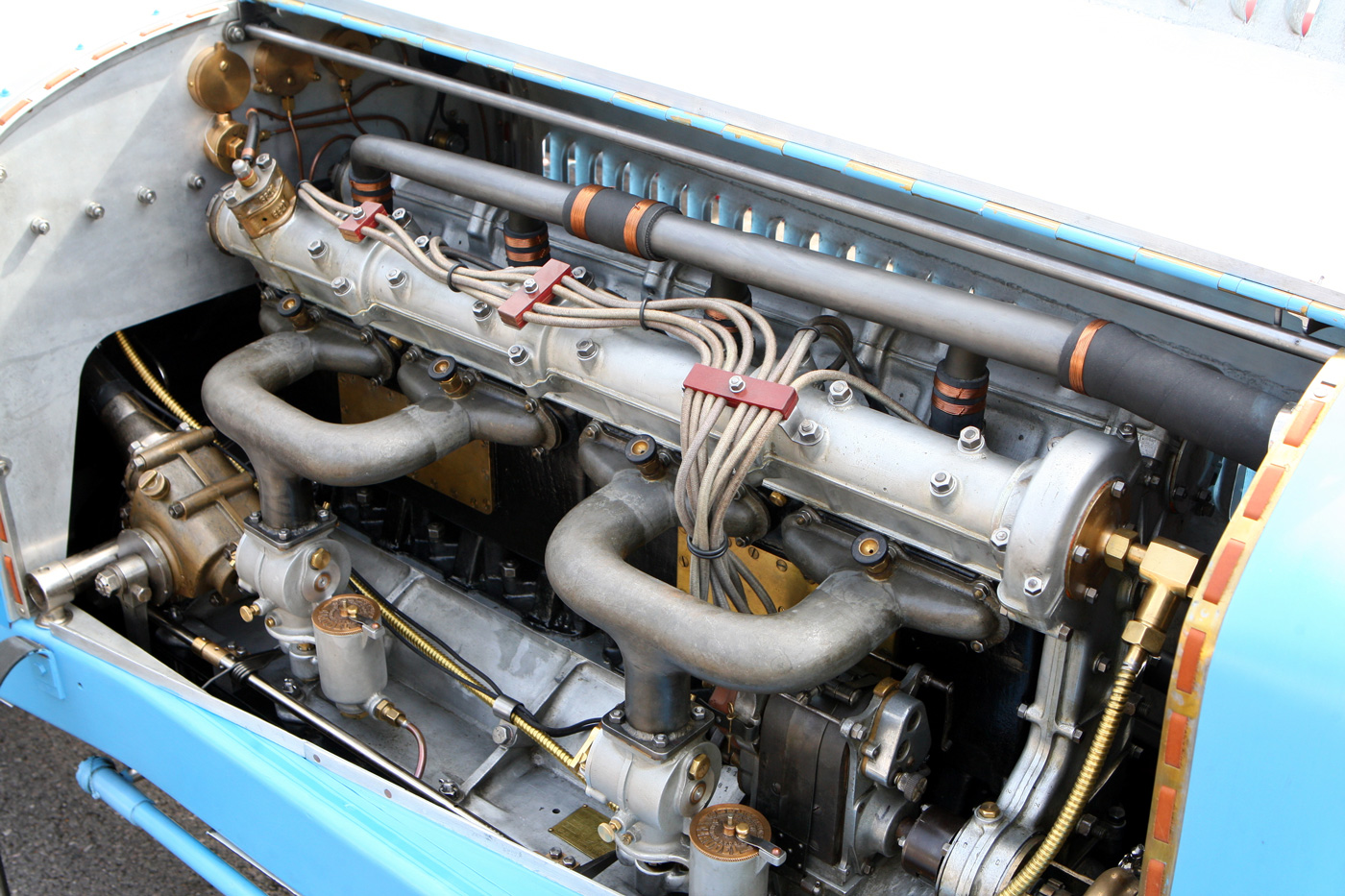
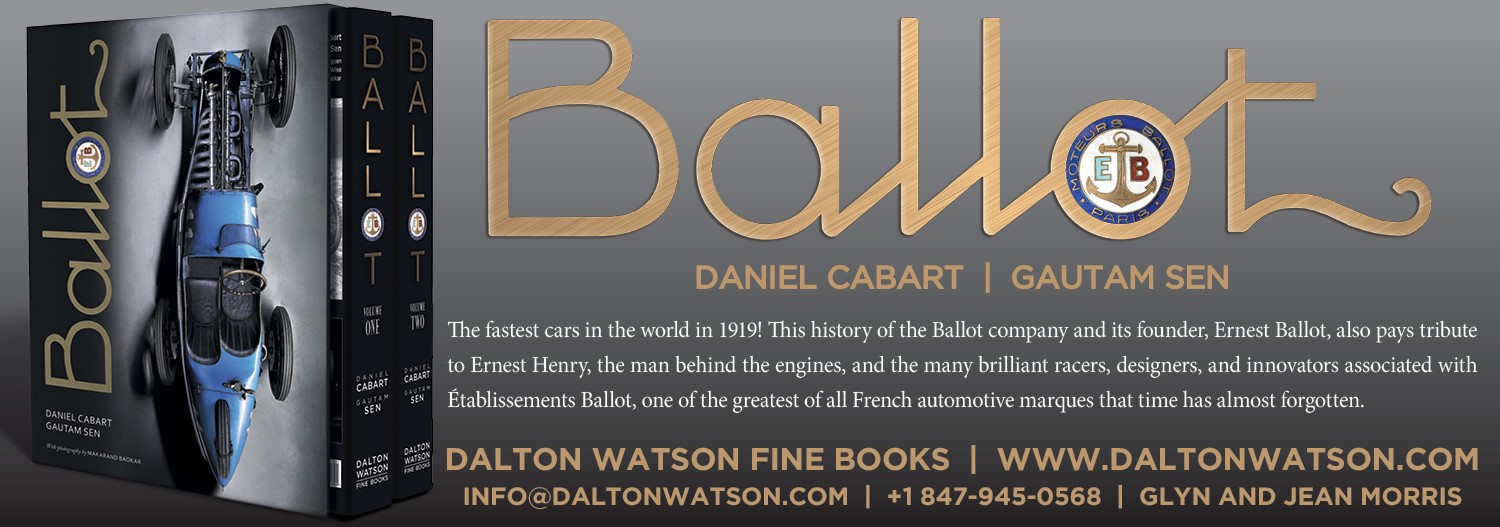
Magnificent photo of the factory
I probably didn’t stress the fact enough that the Ballot book is packed with wonderful images.
Beautiful images certainly, but often spread across two pages, so that the middle of the photo is buried in the binding. I often wonder why a page couldn’t fold out? Certainly cost is not an issue with this sort of book.